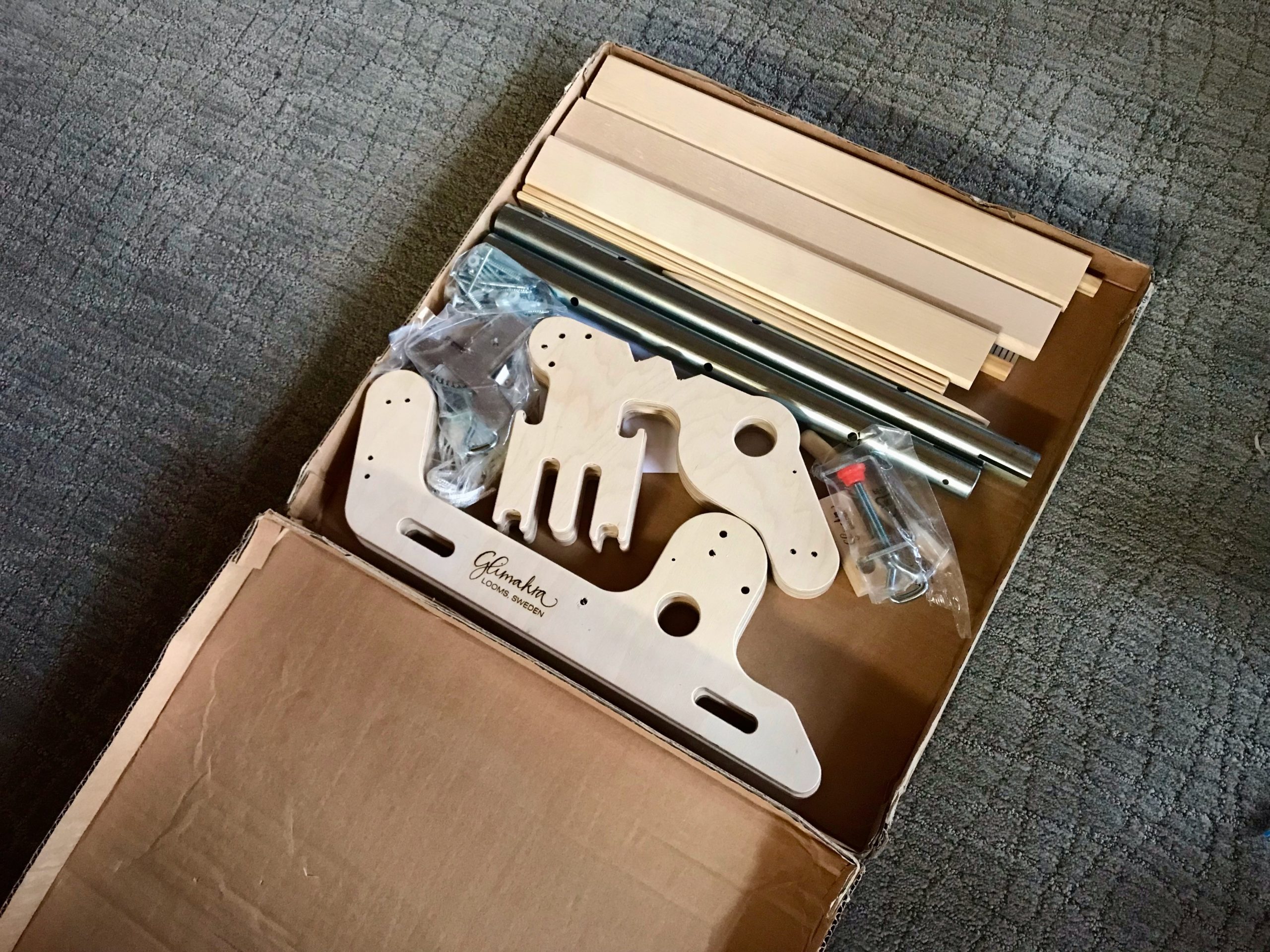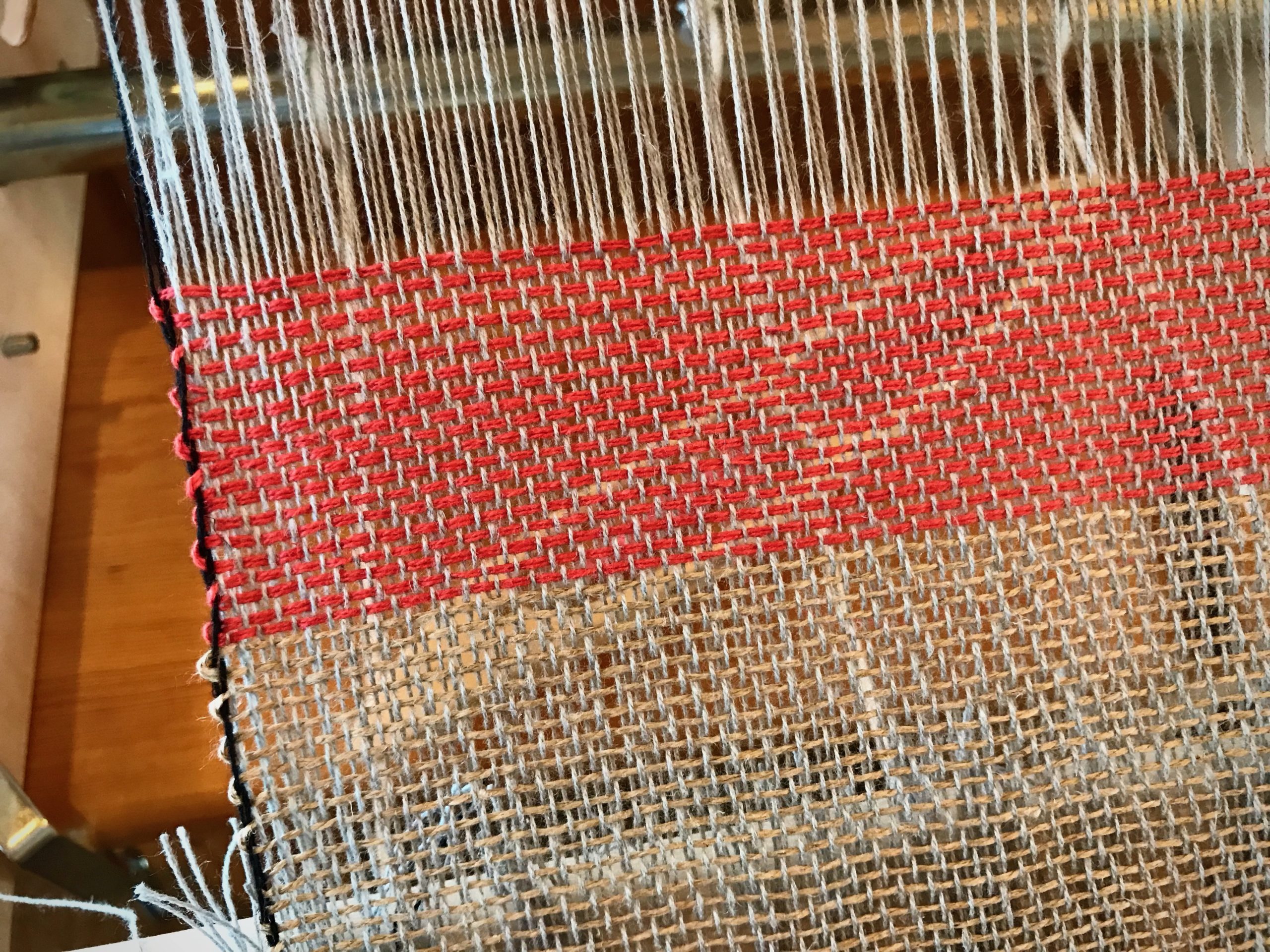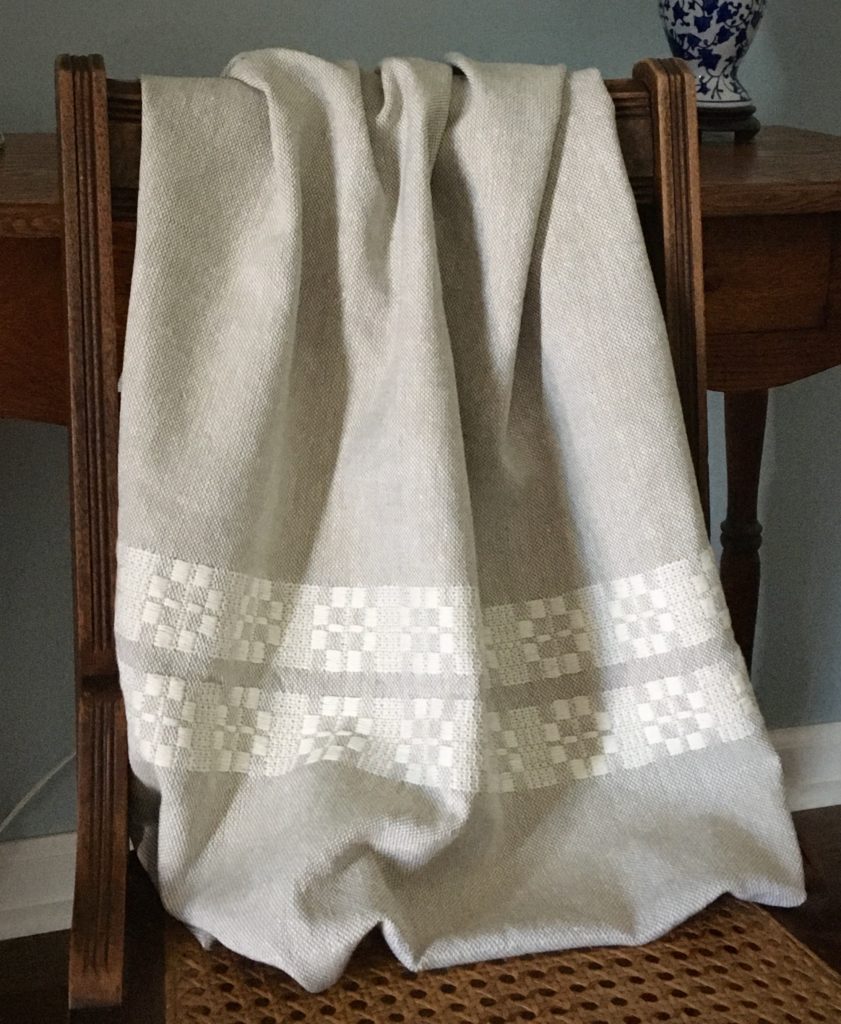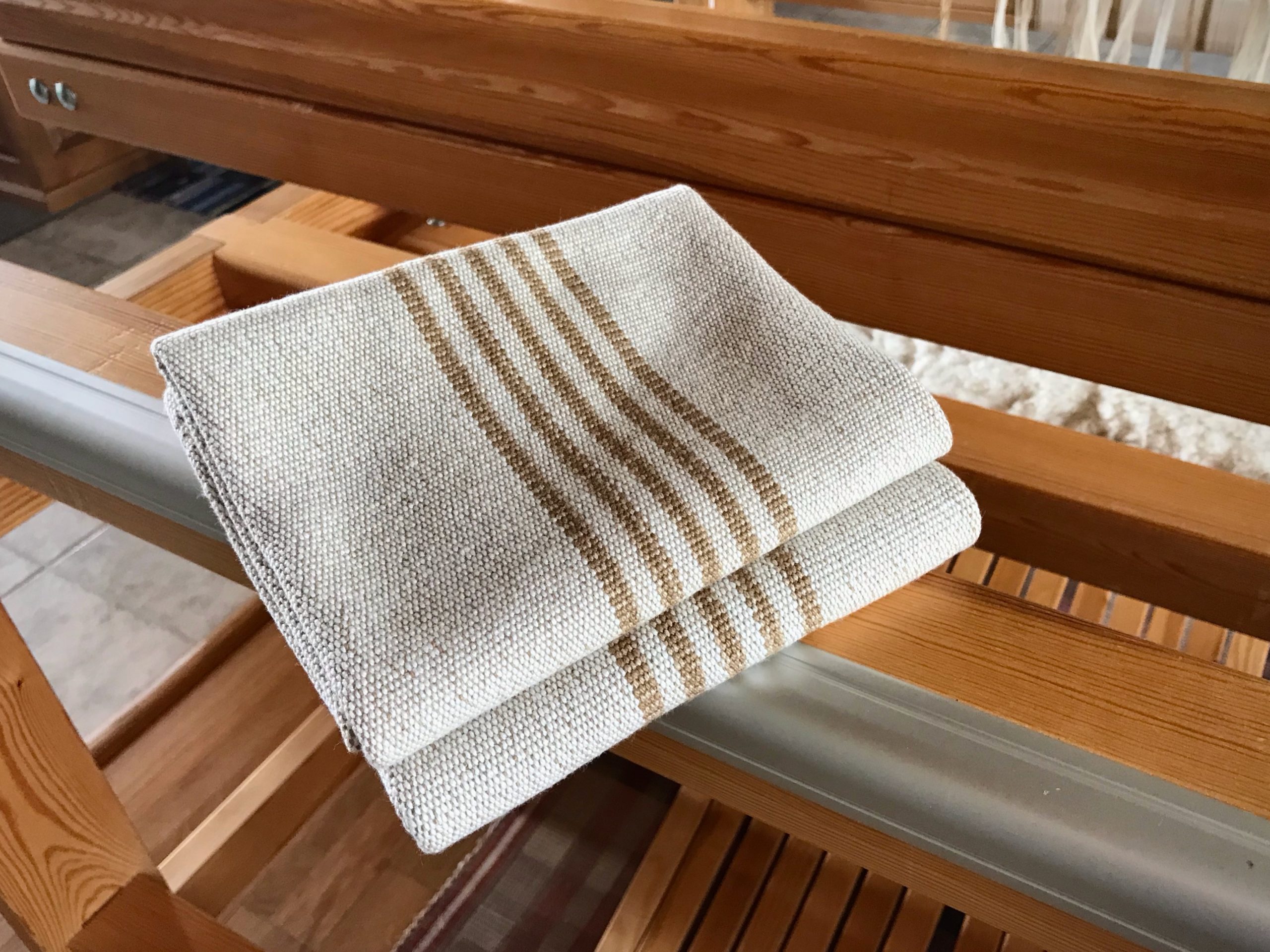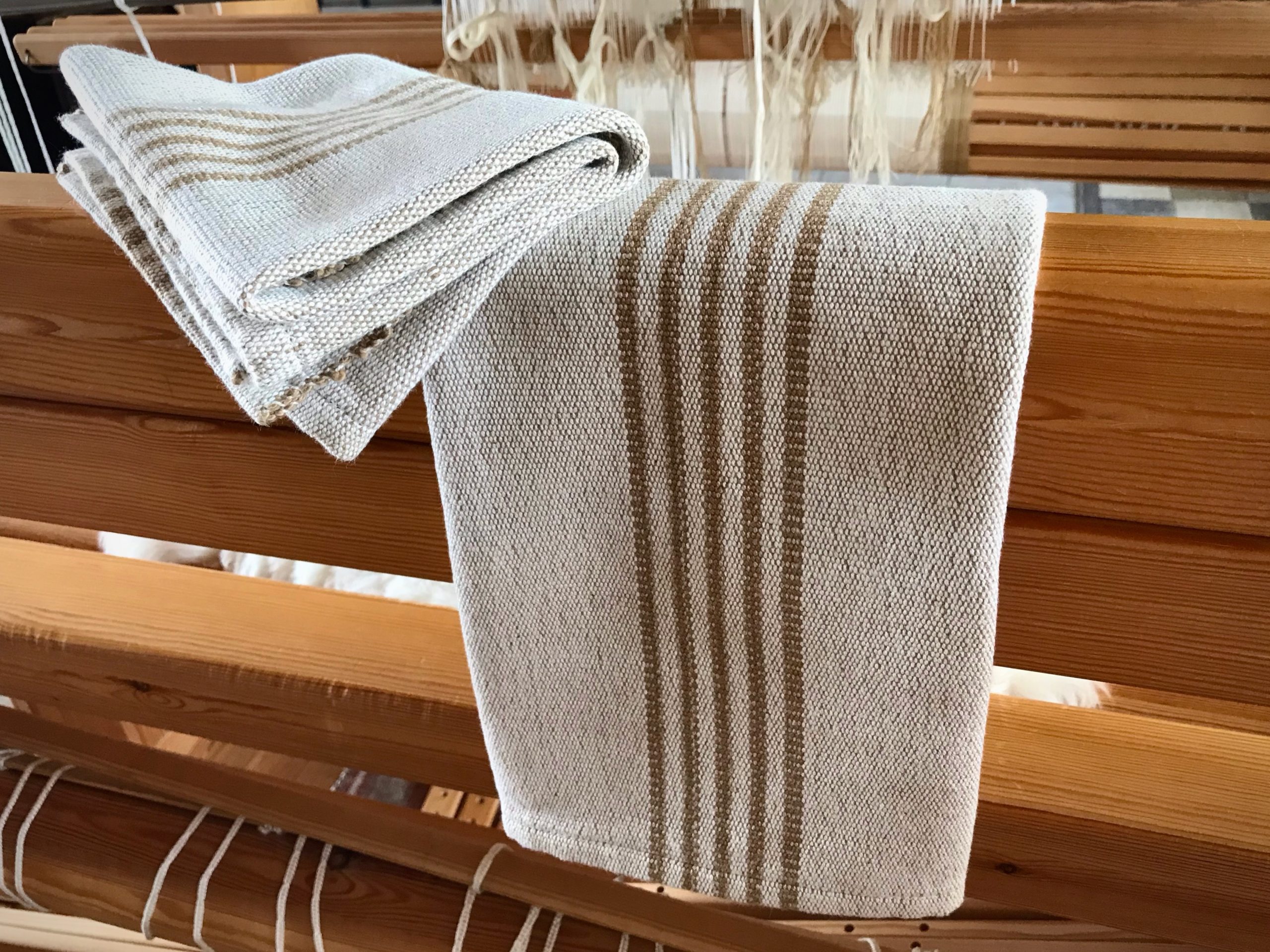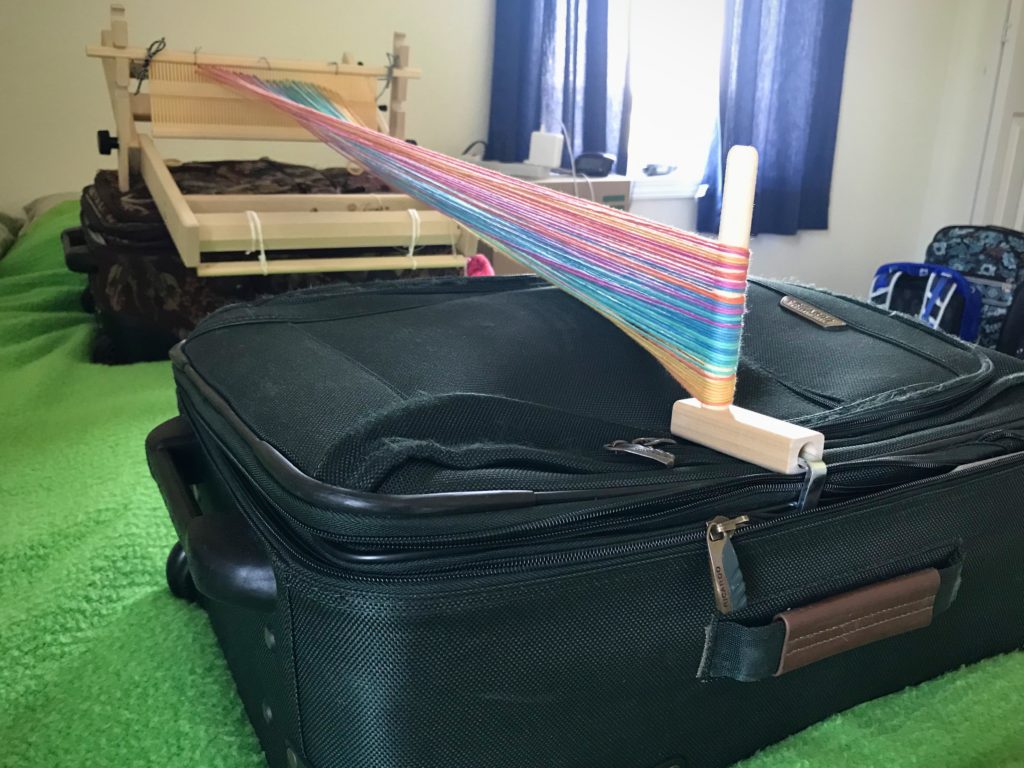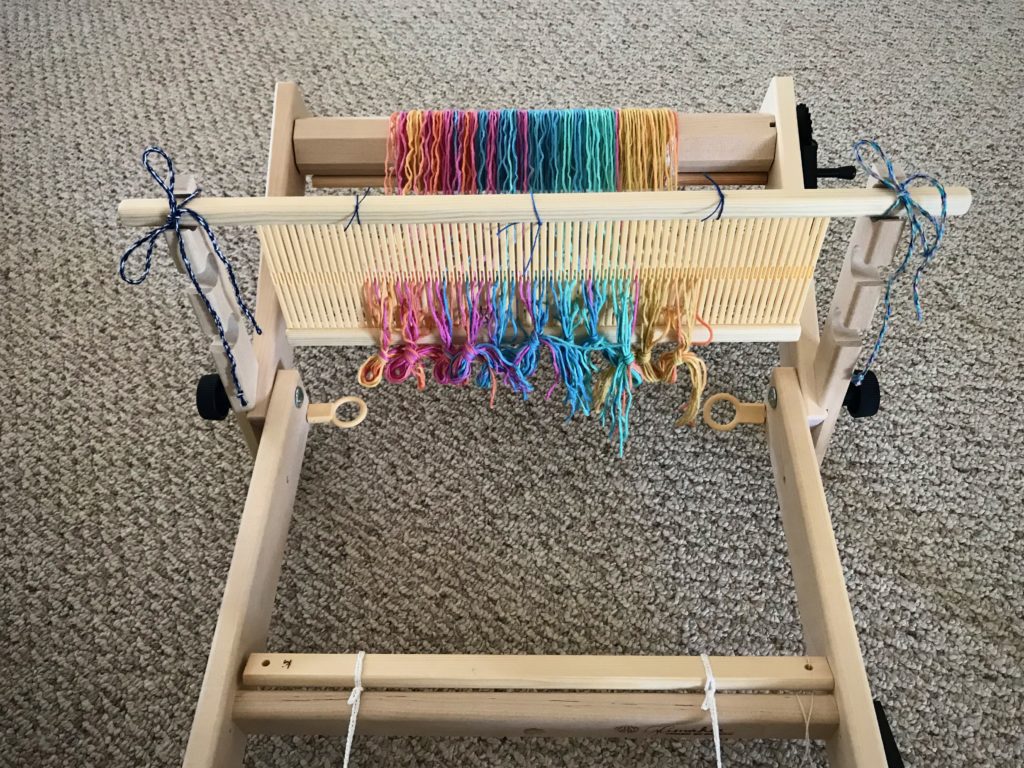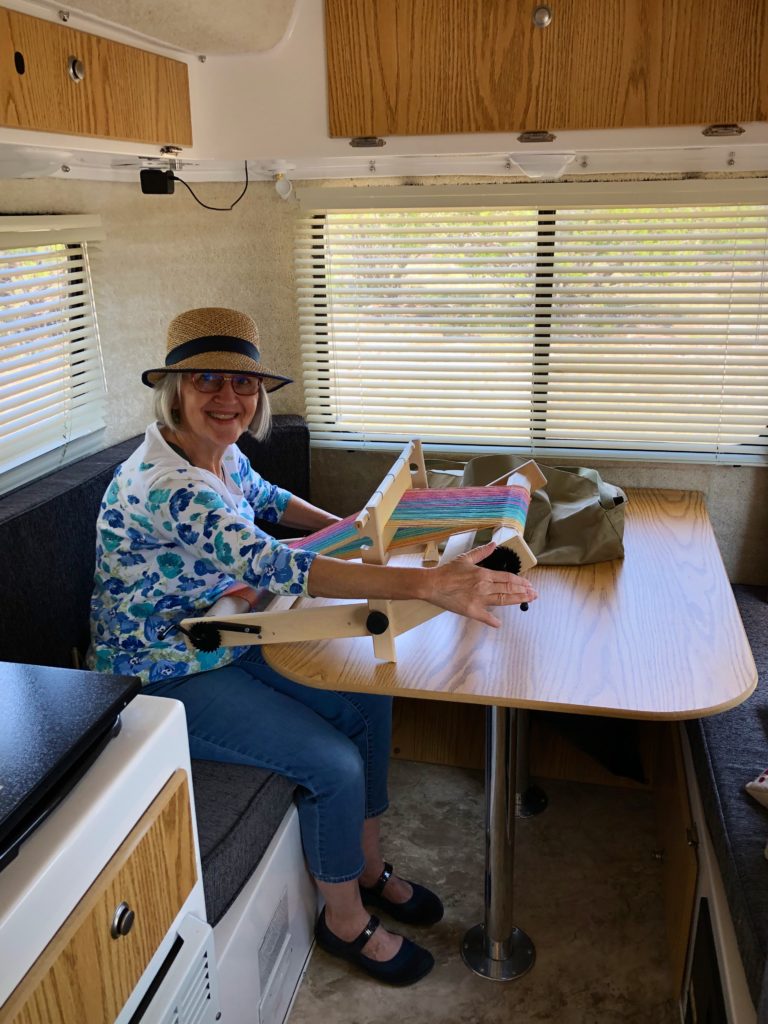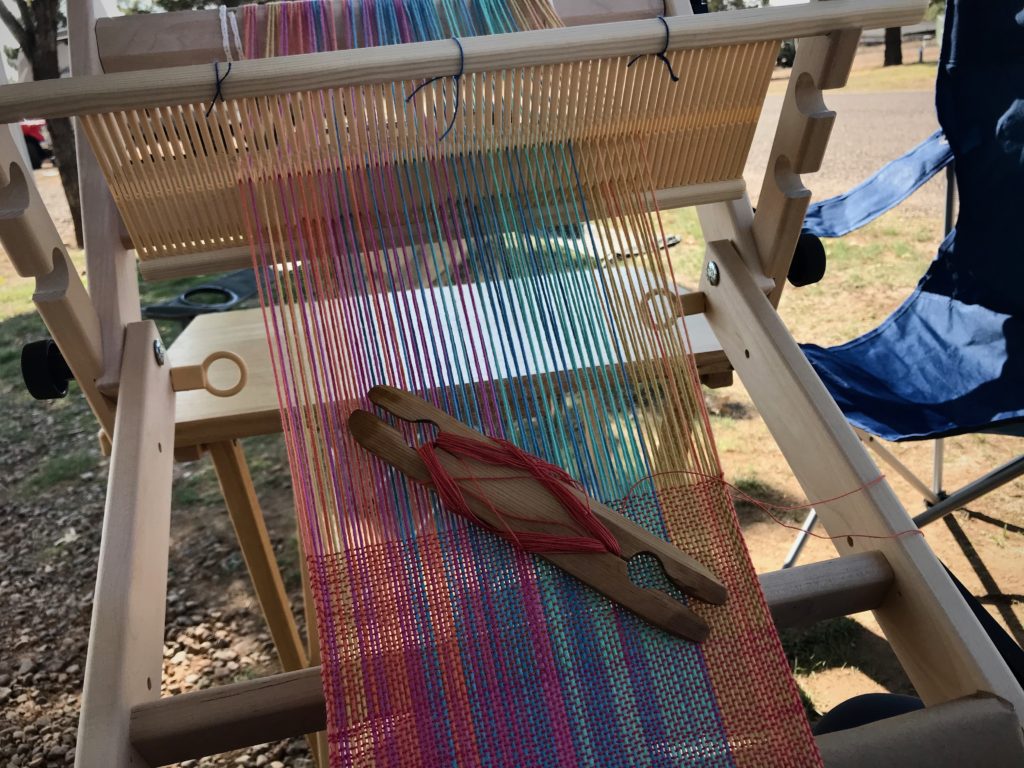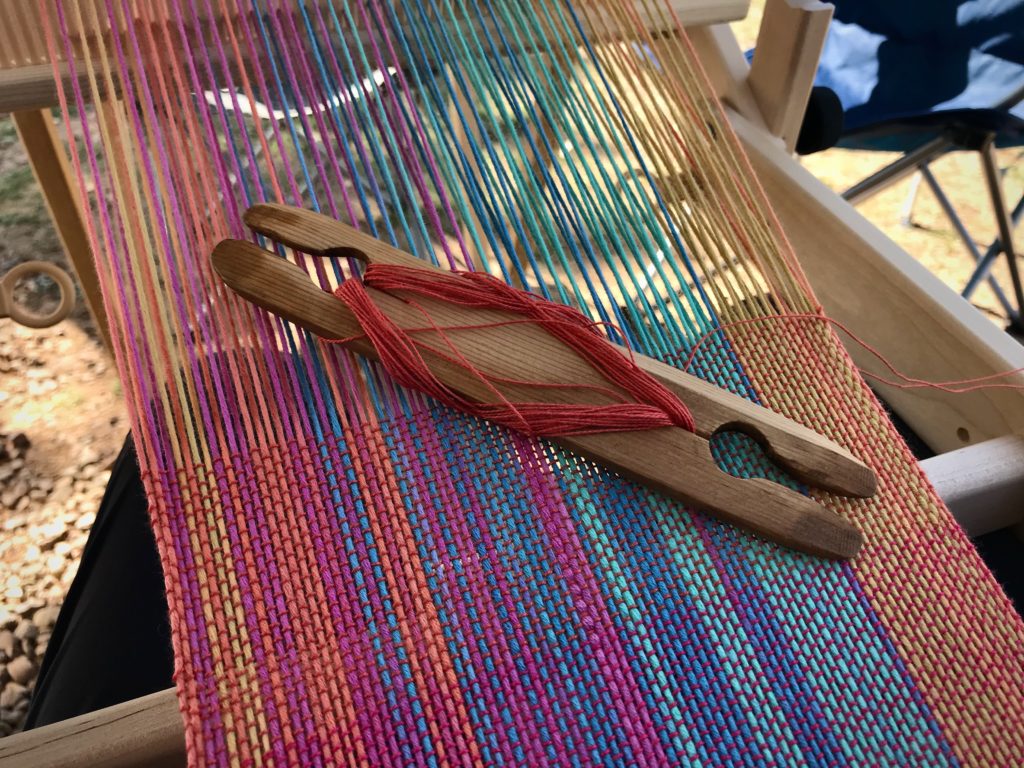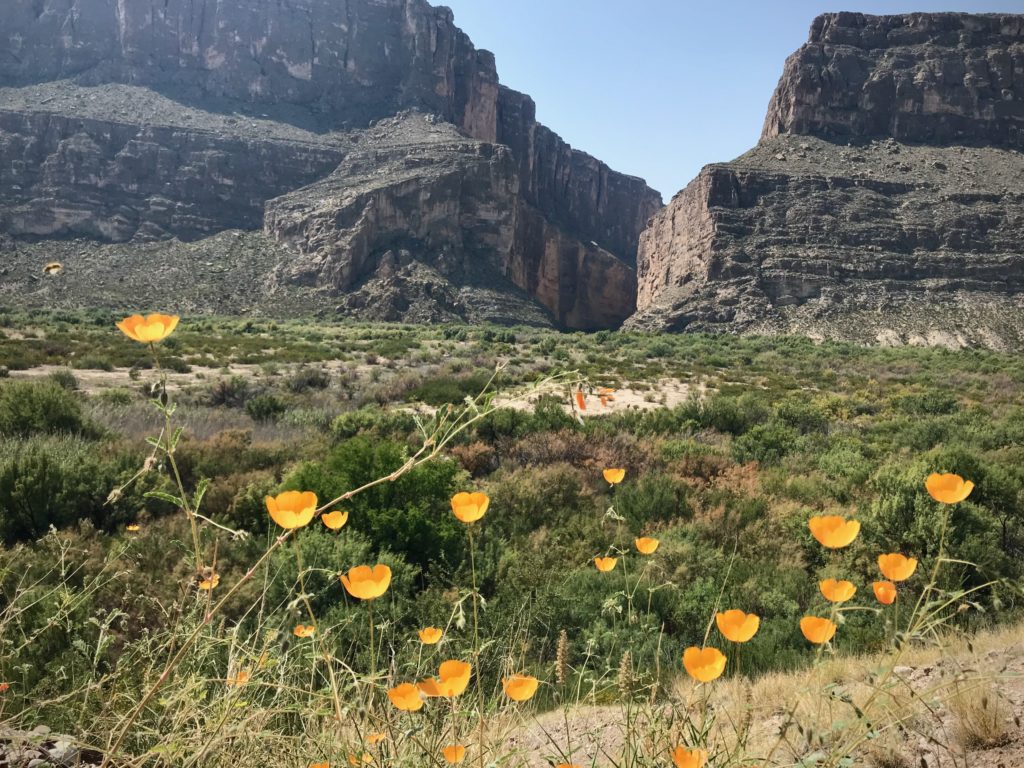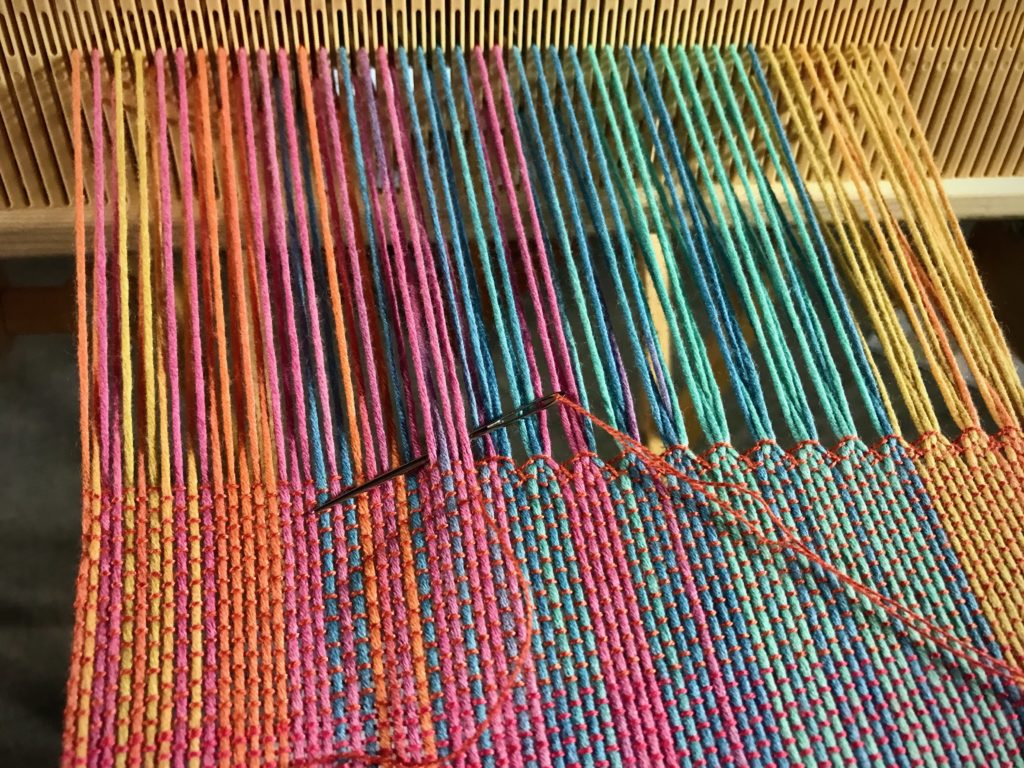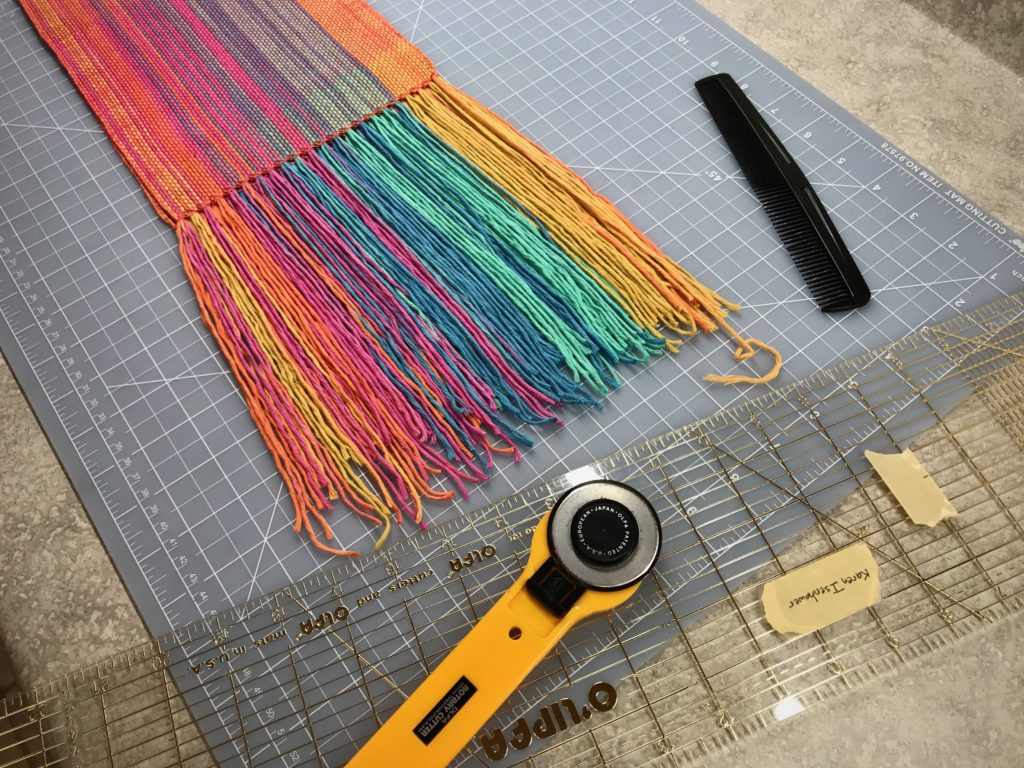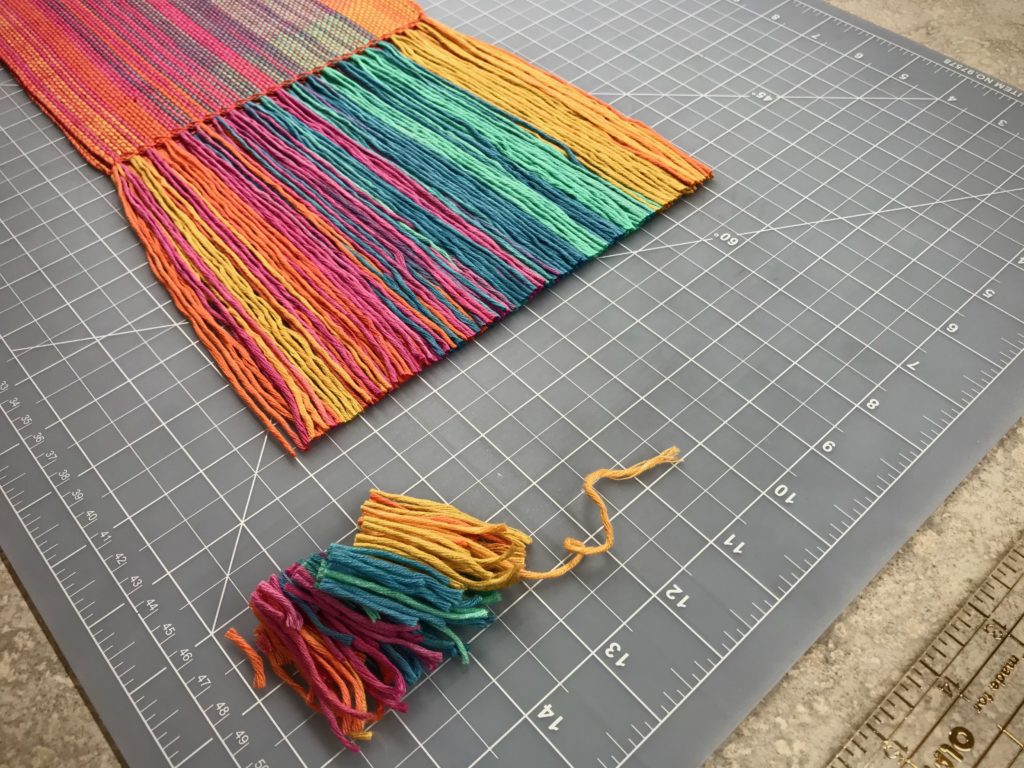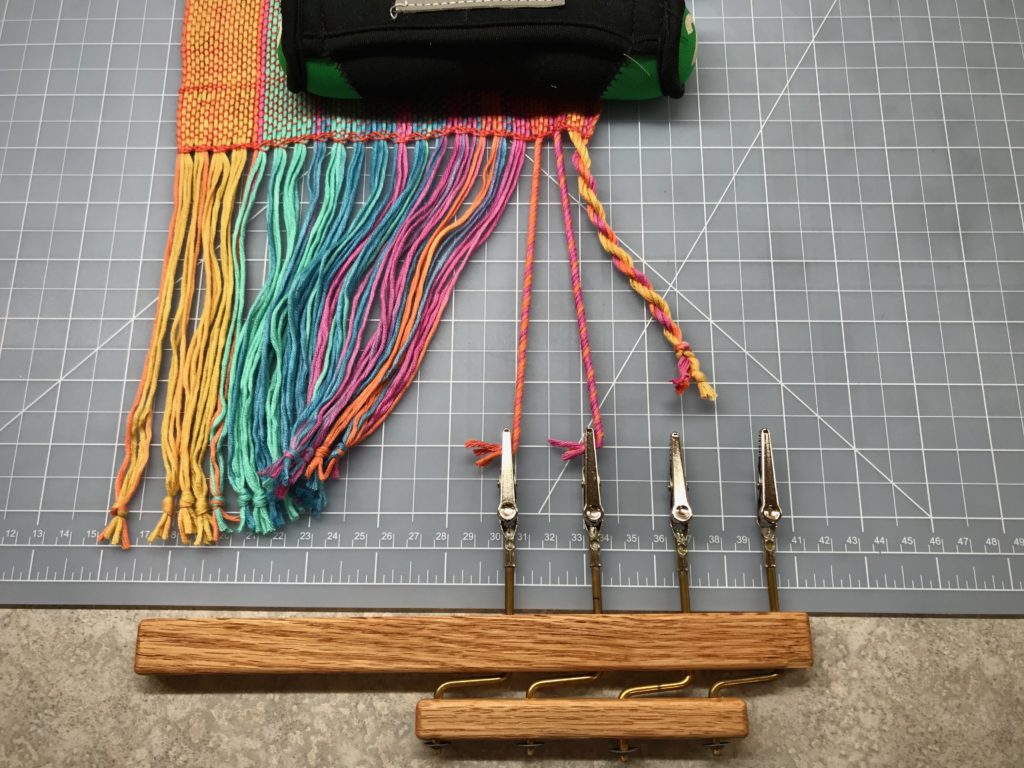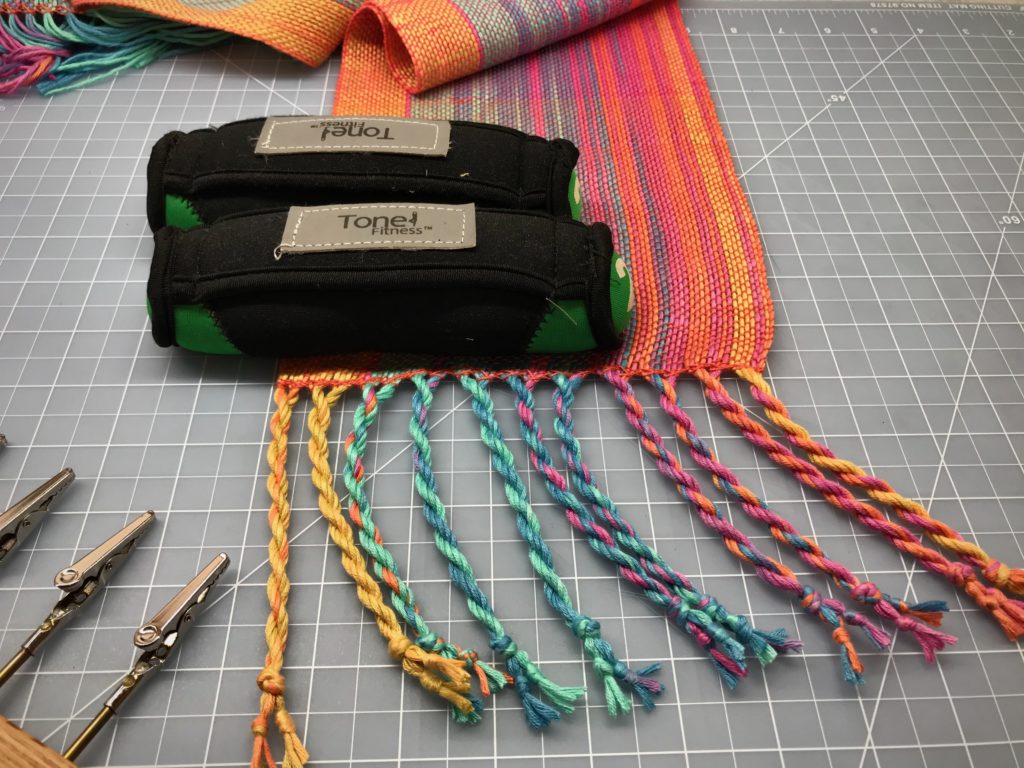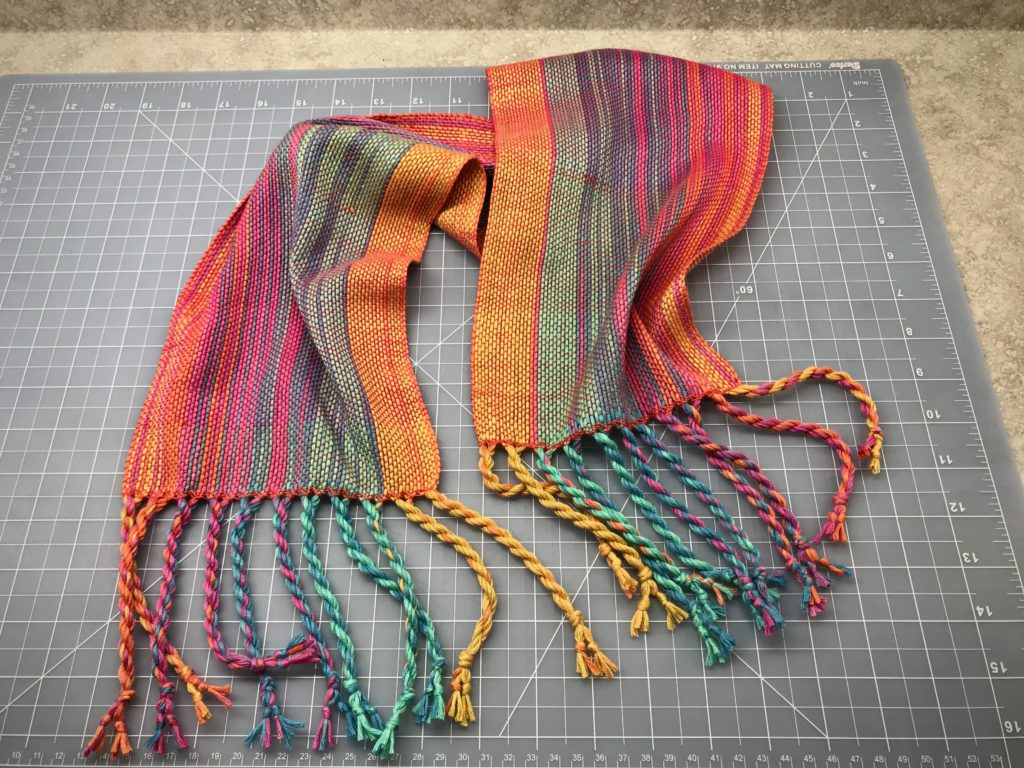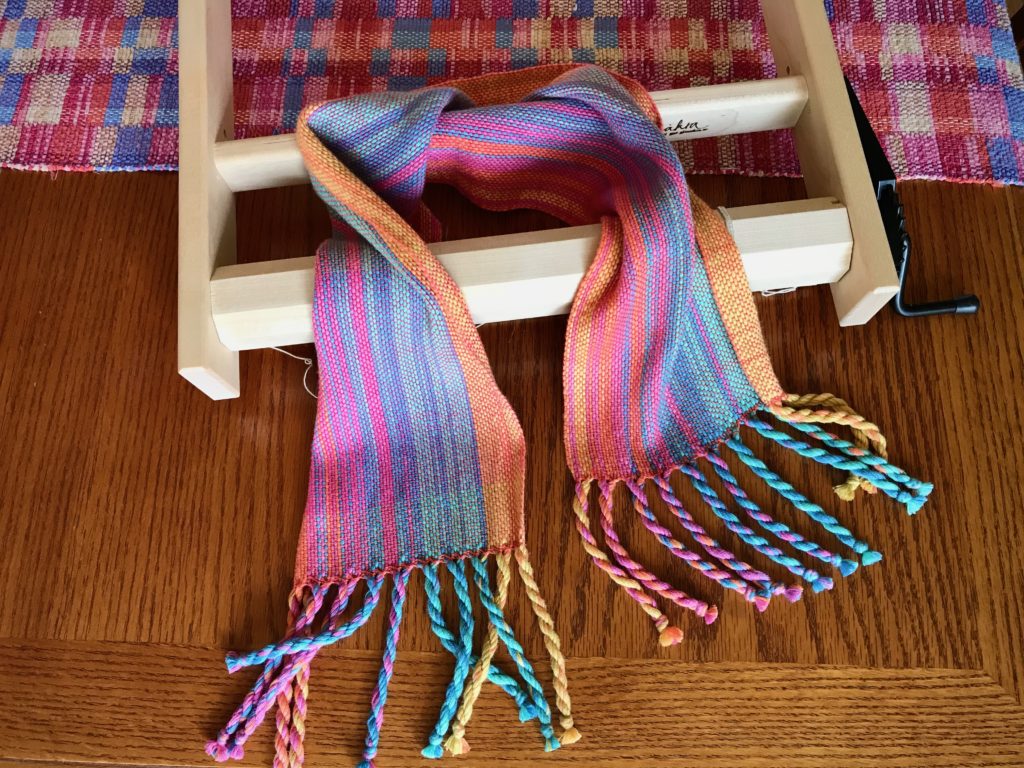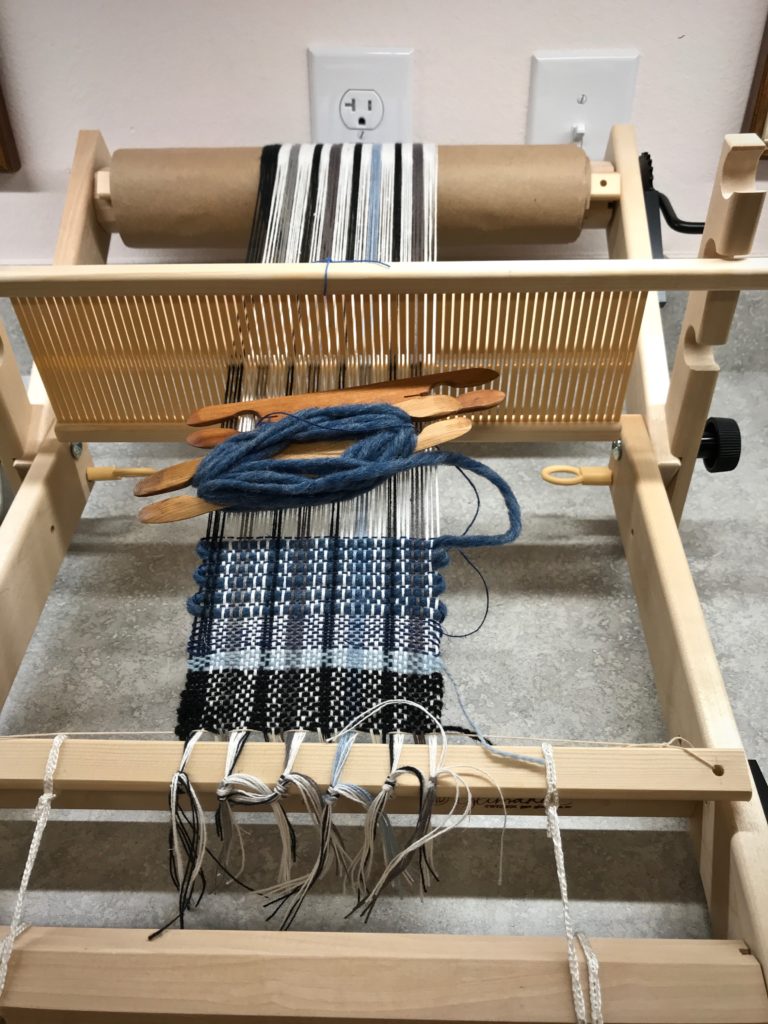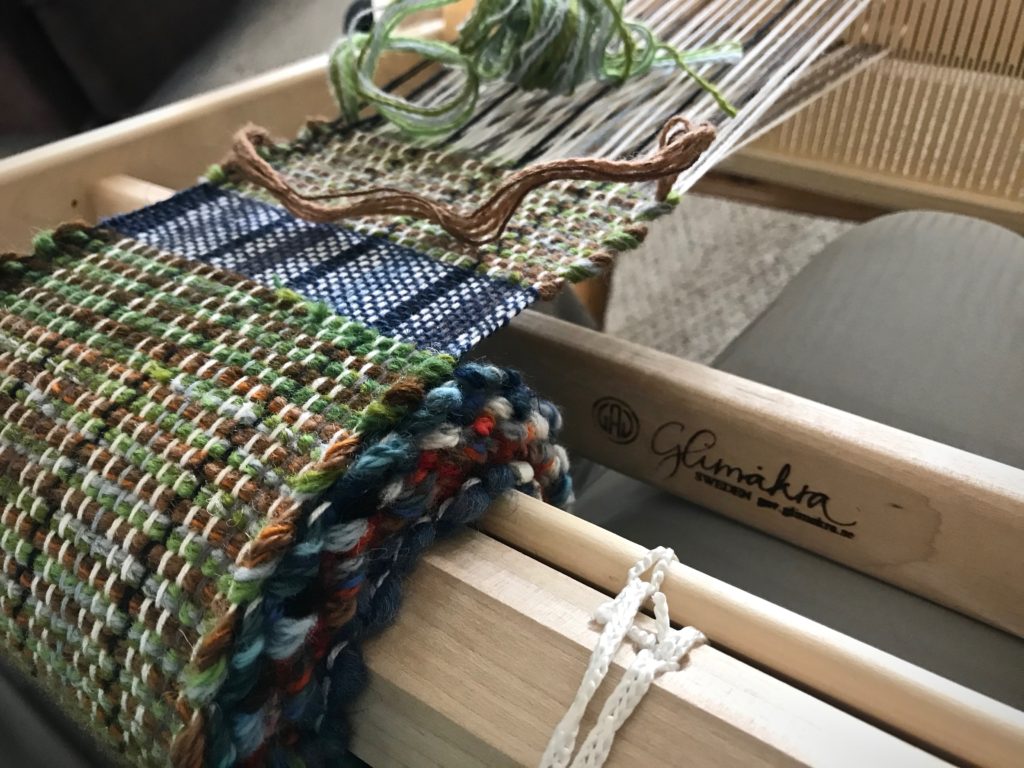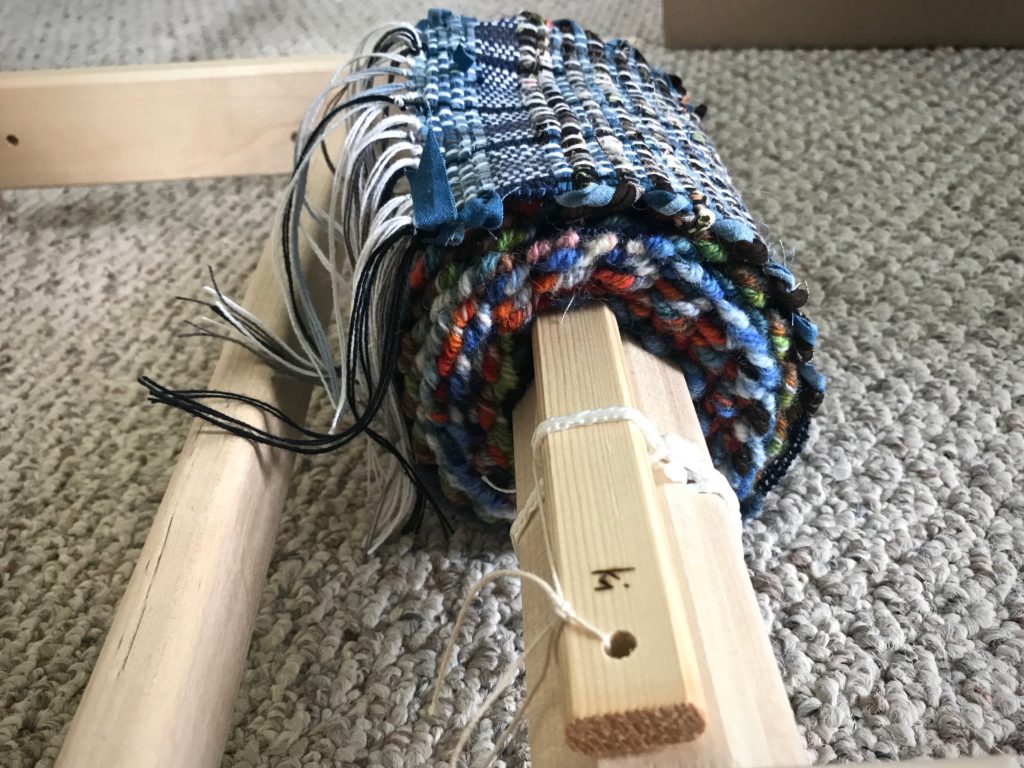I call her the ”Rain Girl.” She comes from an illustration in a very old children’s book on our bookshelf. The small tapestry is cute. But with its many slits and single warp wrappings, it falls short of what it could be. I compromised best practices to make it work.
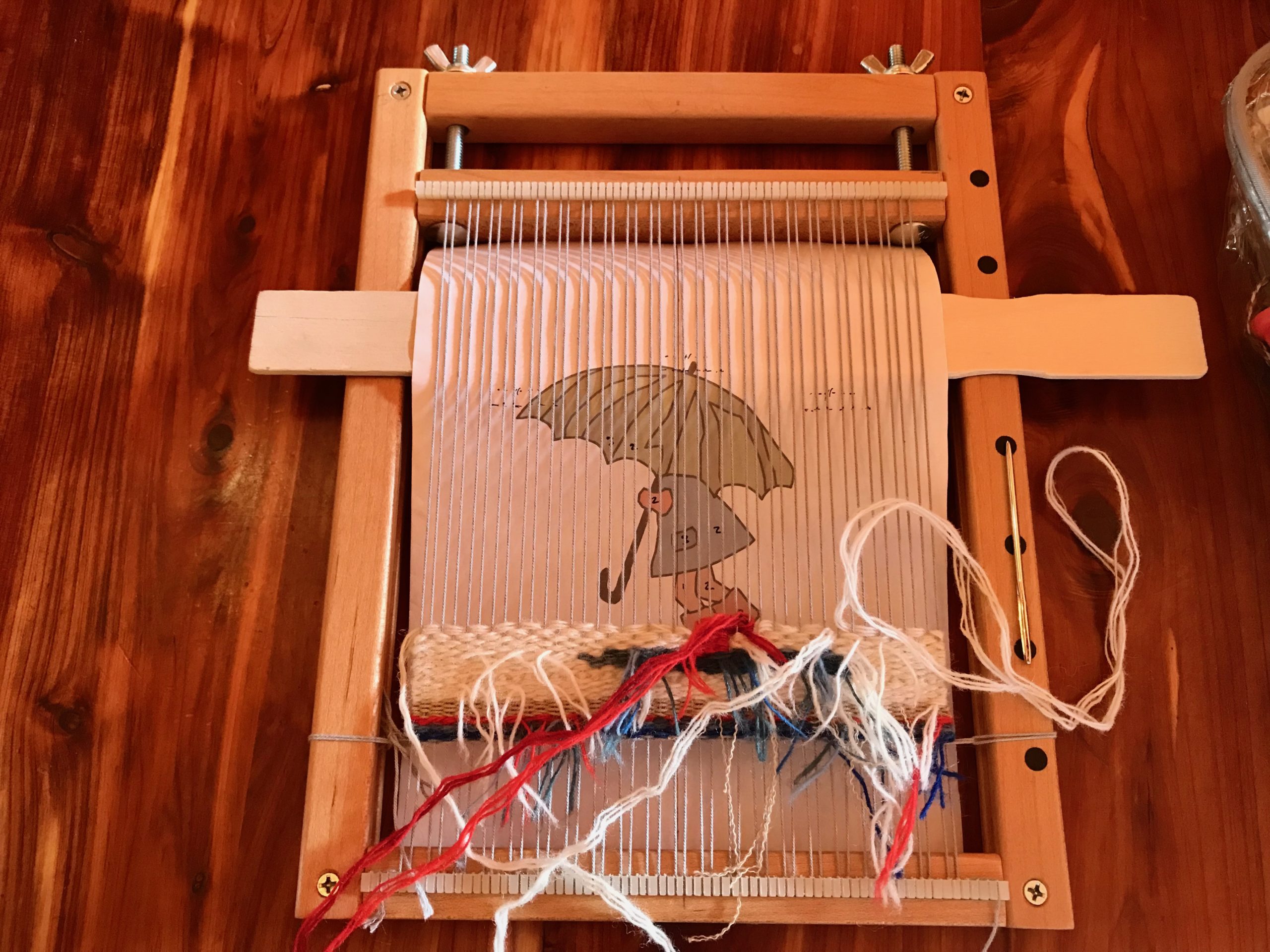
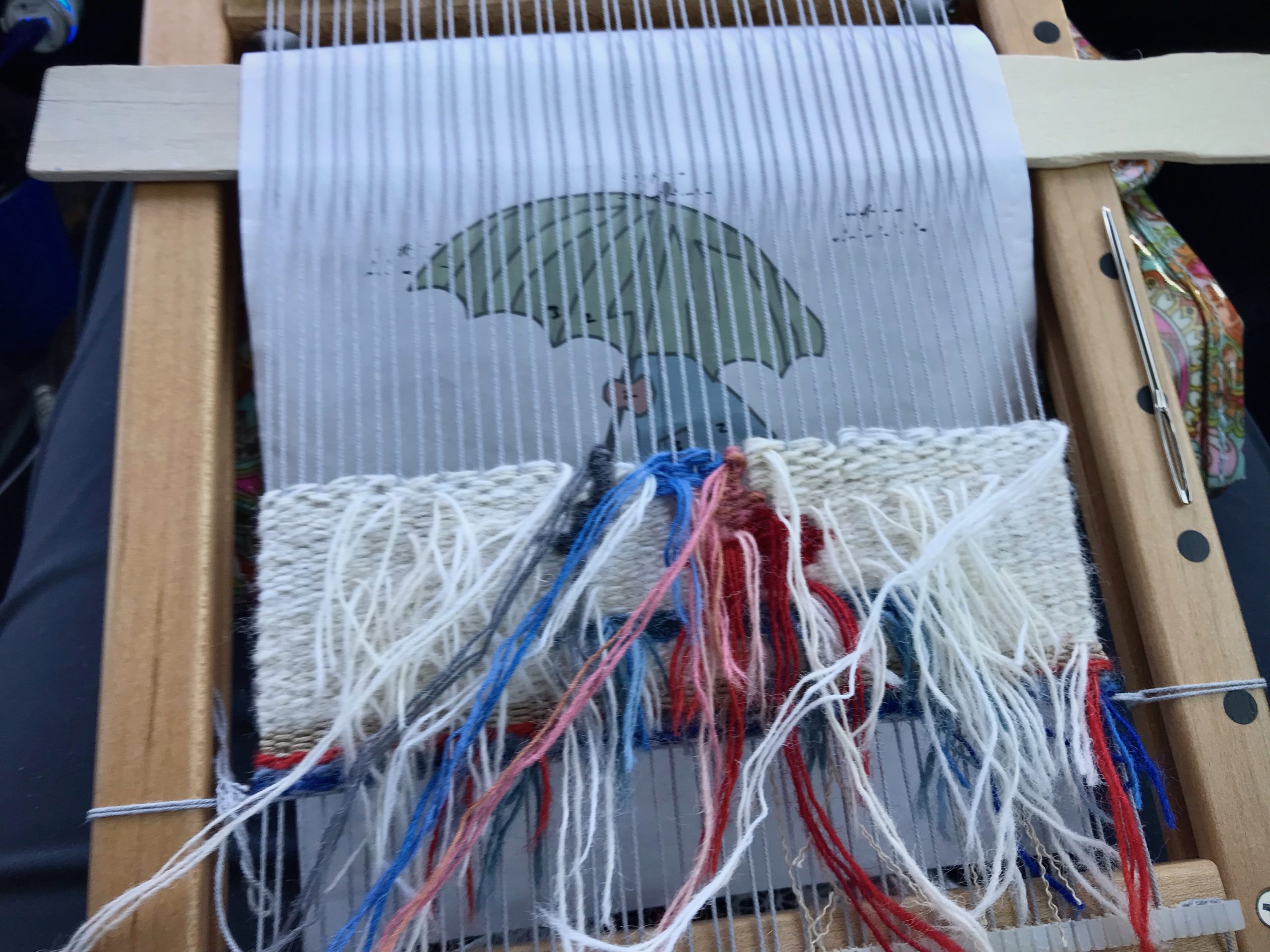
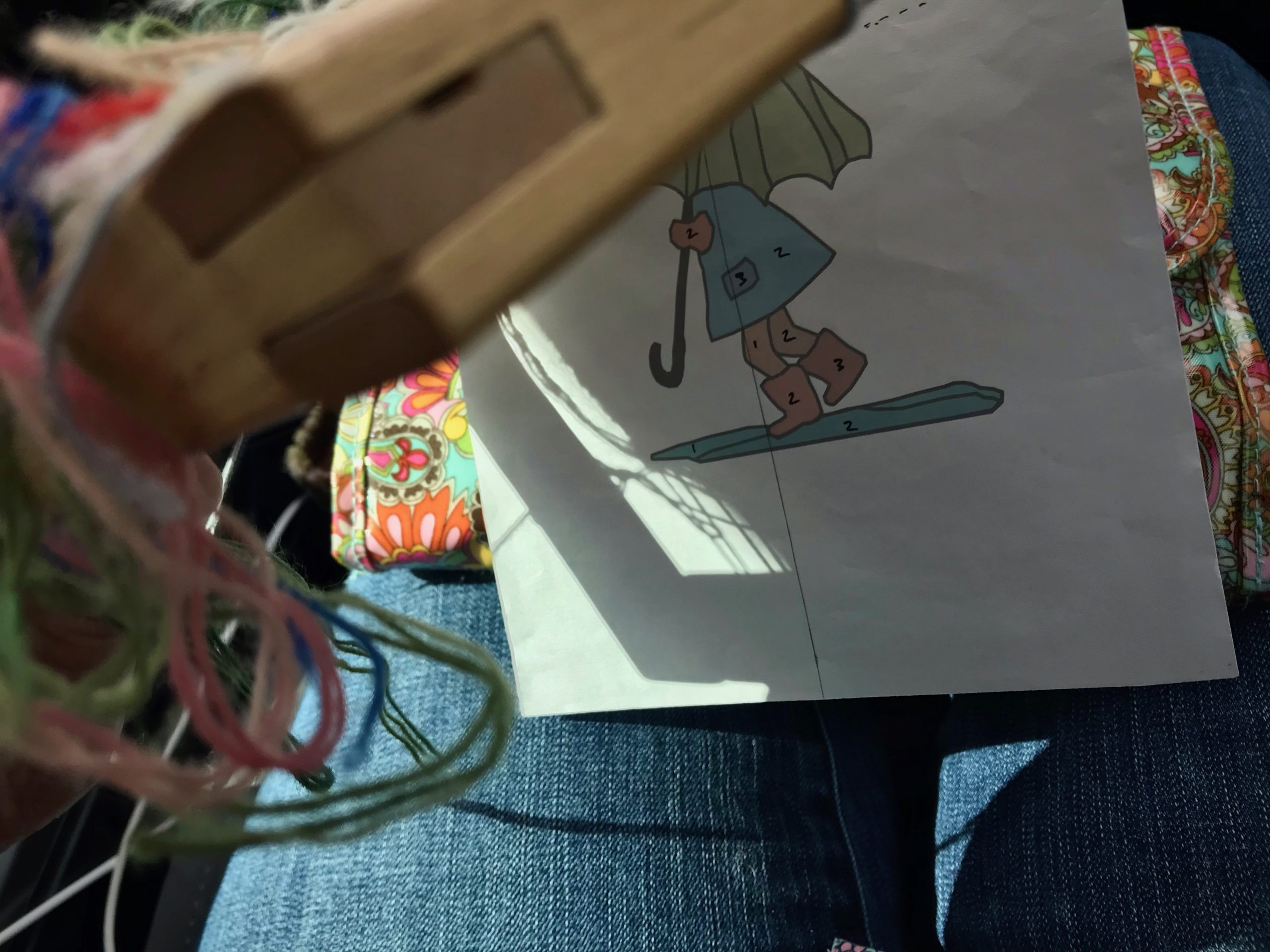
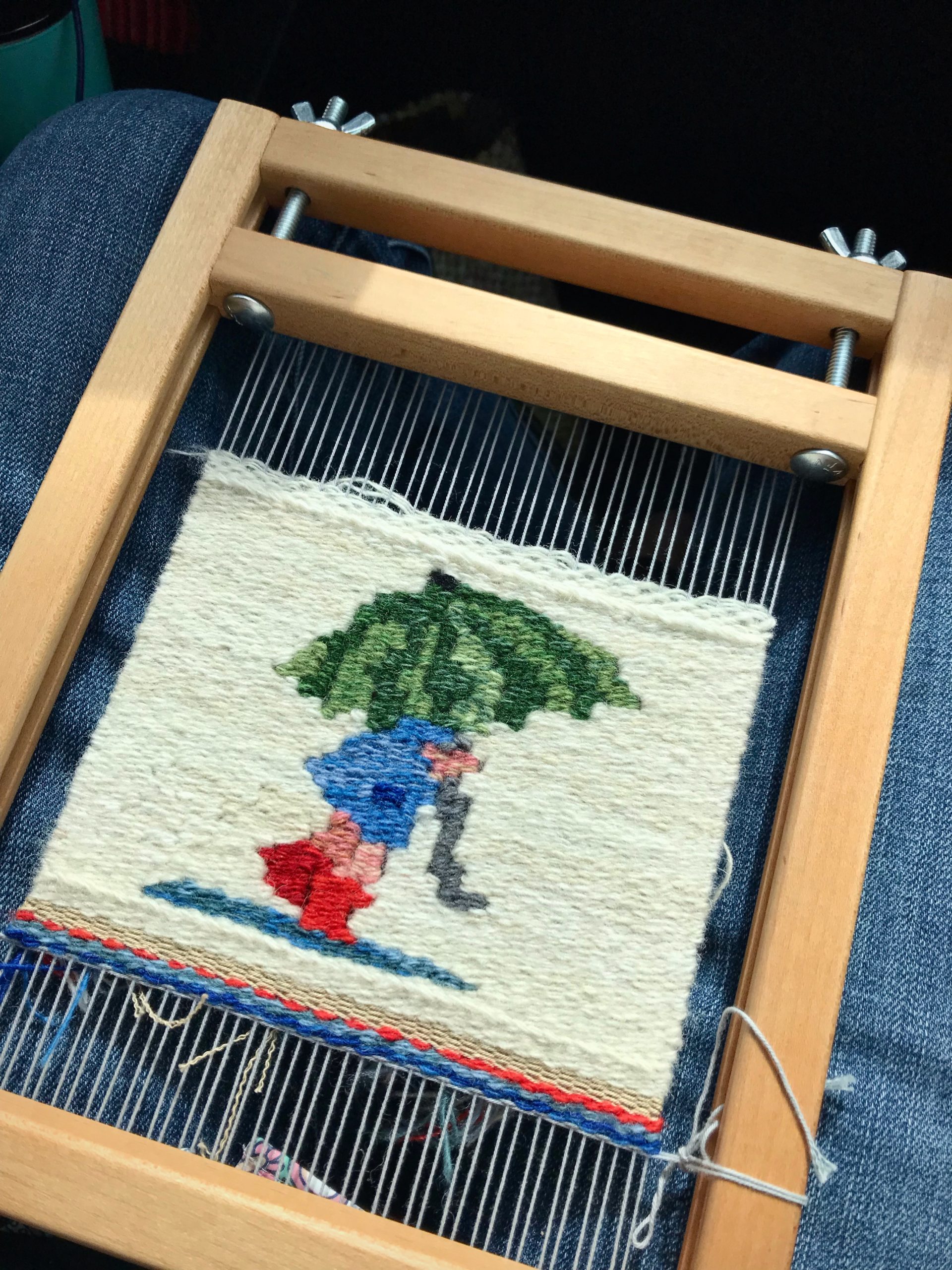
The main fault is with the cartoon. It isn’t weave-able. The image is too small for this sett. There must be a better way to weave this image.
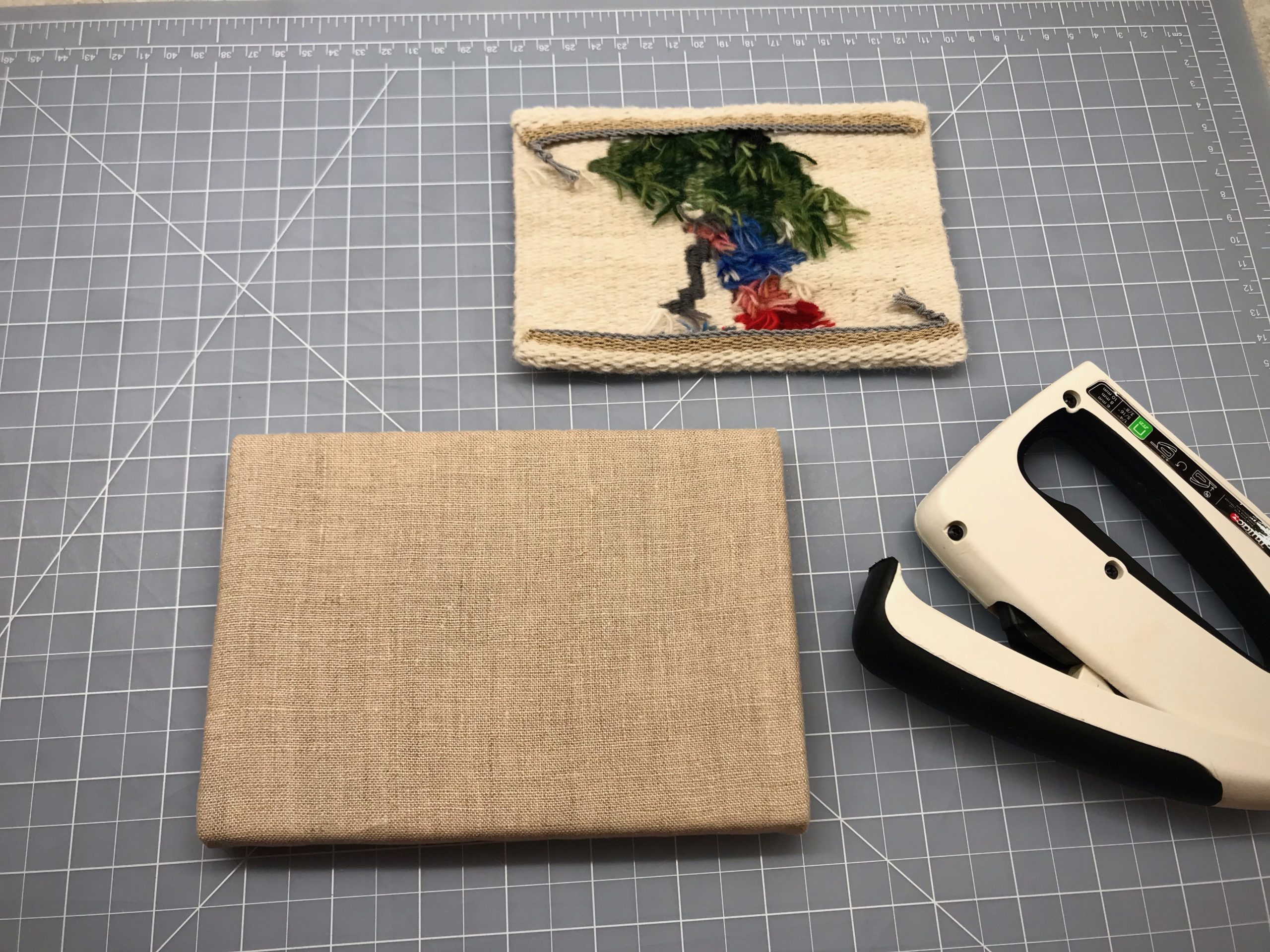
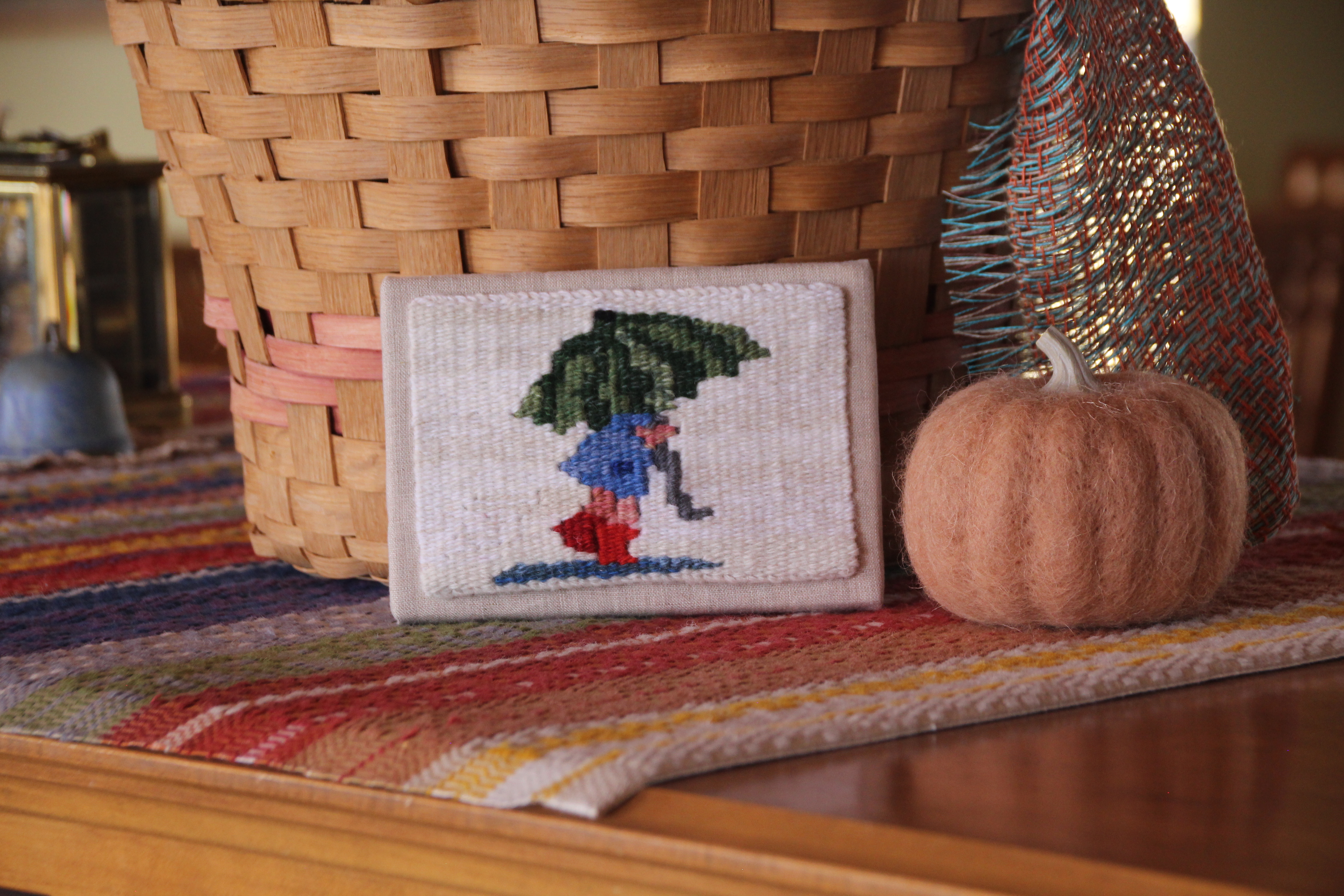
I am starting over with a whole new cartoon! I have now learned that Affinity Designer (computer graphics software) gives me the ability to create vertical parallel lines equivalent to my sett. With those lines in view I can see exactly how each part of the cartoon fits the warp spacing. I am turning the image on its side and enlarging it, and then, cropping to size. This cartoon is going to be weave-able.
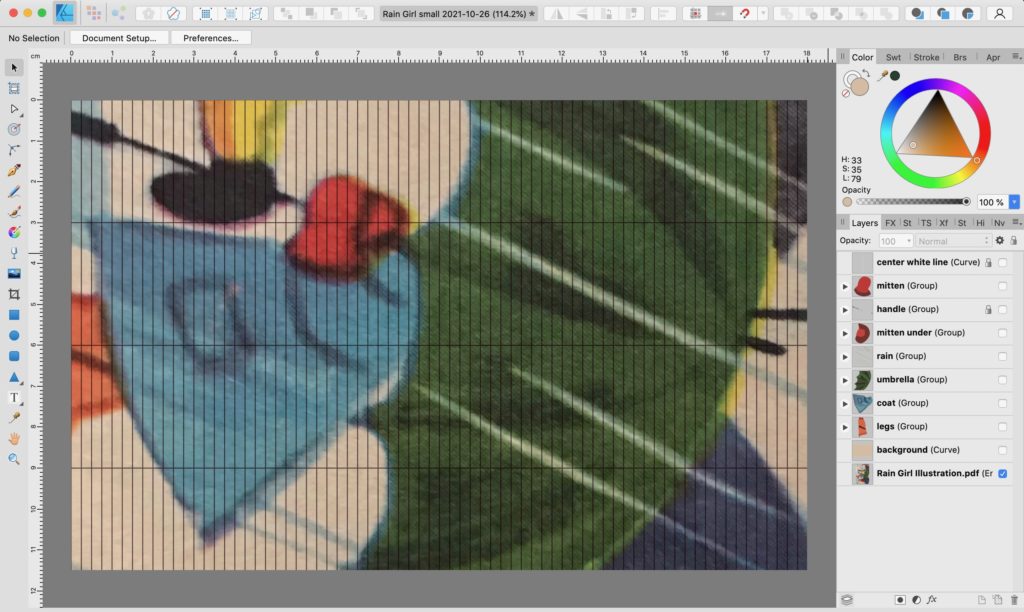
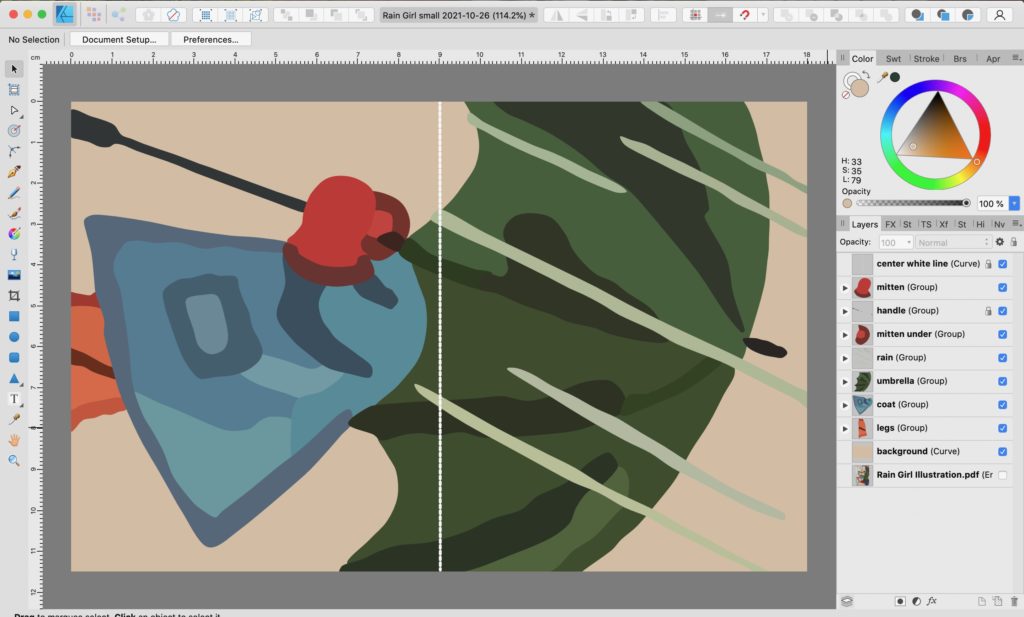
All of us have gone our own way. We insistently follow our own cartoon, compromising best practices, while struggling to make it work. There is a better way. Jesus Christ gave himself so that the Grand Weaver’s cartoon could be written on our hearts. In his hands we become his beloved tapestry. Be weave-able.
May your cartoon be just right.
Hopeful,
Karen

